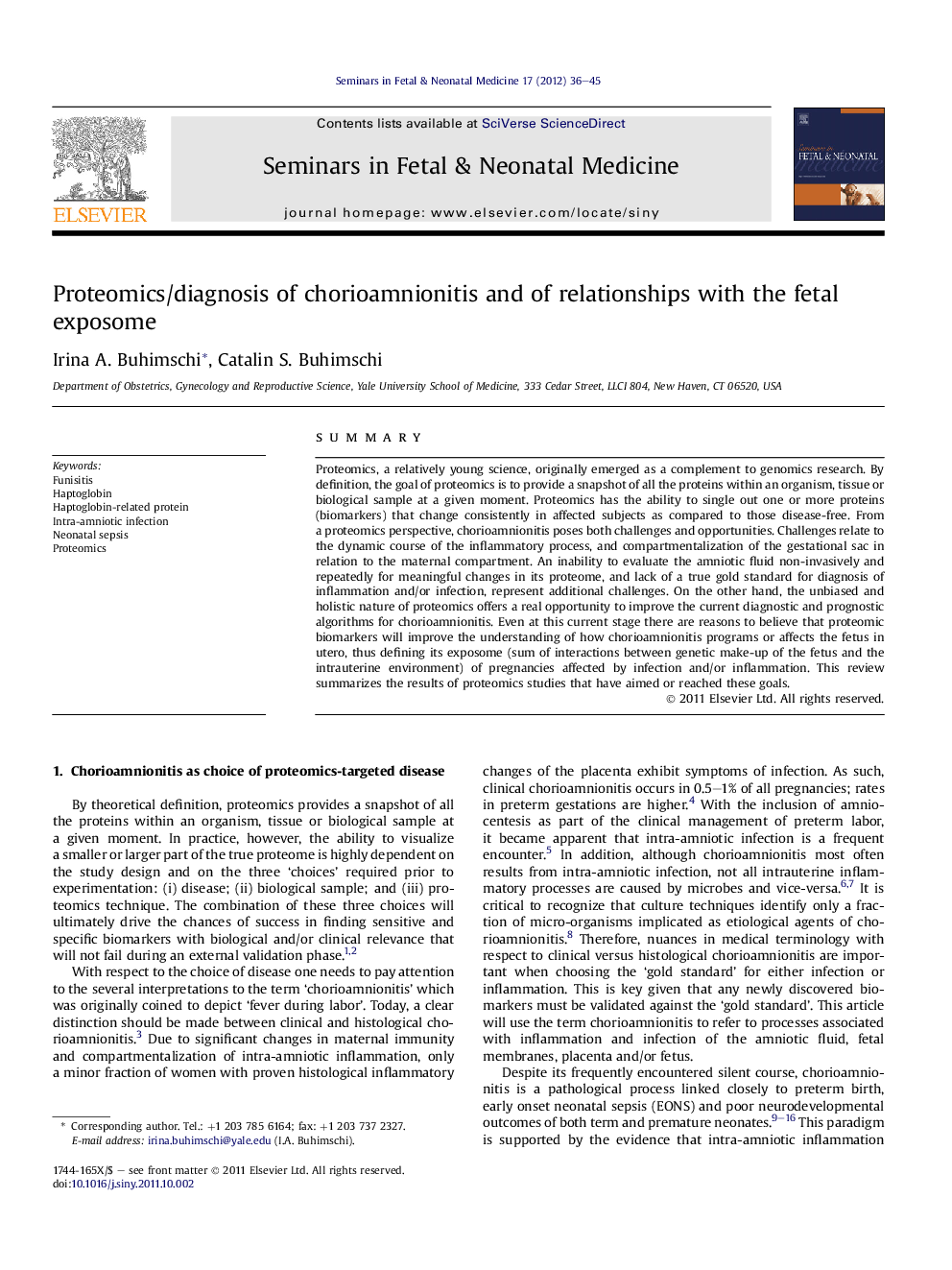| کد مقاله | کد نشریه | سال انتشار | مقاله انگلیسی | نسخه تمام متن |
|---|---|---|---|---|
| 3974427 | 1256991 | 2012 | 10 صفحه PDF | دانلود رایگان |

SummaryProteomics, a relatively young science, originally emerged as a complement to genomics research. By definition, the goal of proteomics is to provide a snapshot of all the proteins within an organism, tissue or biological sample at a given moment. Proteomics has the ability to single out one or more proteins (biomarkers) that change consistently in affected subjects as compared to those disease-free. From a proteomics perspective, chorioamnionitis poses both challenges and opportunities. Challenges relate to the dynamic course of the inflammatory process, and compartmentalization of the gestational sac in relation to the maternal compartment. An inability to evaluate the amniotic fluid non-invasively and repeatedly for meaningful changes in its proteome, and lack of a true gold standard for diagnosis of inflammation and/or infection, represent additional challenges. On the other hand, the unbiased and holistic nature of proteomics offers a real opportunity to improve the current diagnostic and prognostic algorithms for chorioamnionitis. Even at this current stage there are reasons to believe that proteomic biomarkers will improve the understanding of how chorioamnionitis programs or affects the fetus in utero, thus defining its exposome (sum of interactions between genetic make-up of the fetus and the intrauterine environment) of pregnancies affected by infection and/or inflammation. This review summarizes the results of proteomics studies that have aimed or reached these goals.
Journal: Seminars in Fetal and Neonatal Medicine - Volume 17, Issue 1, February 2012, Pages 36–45